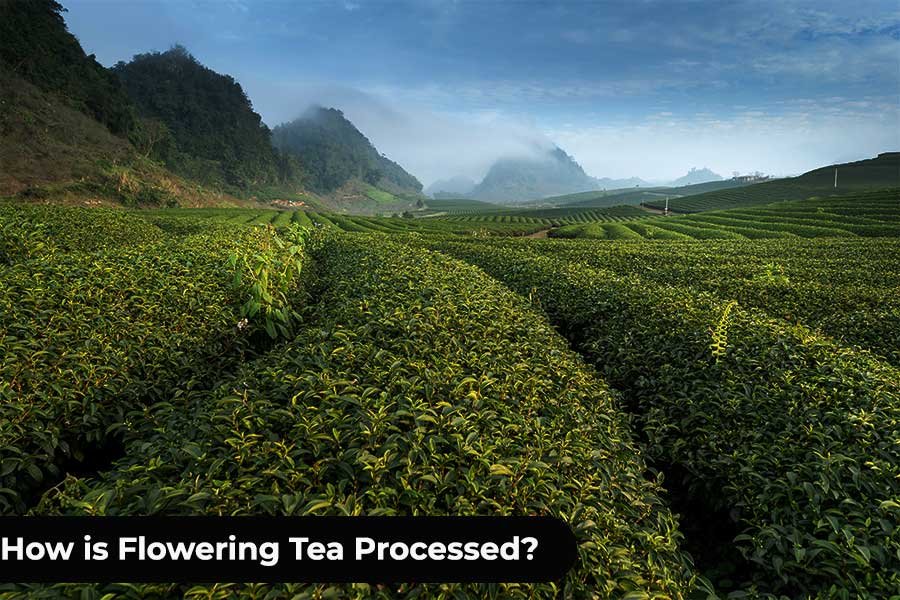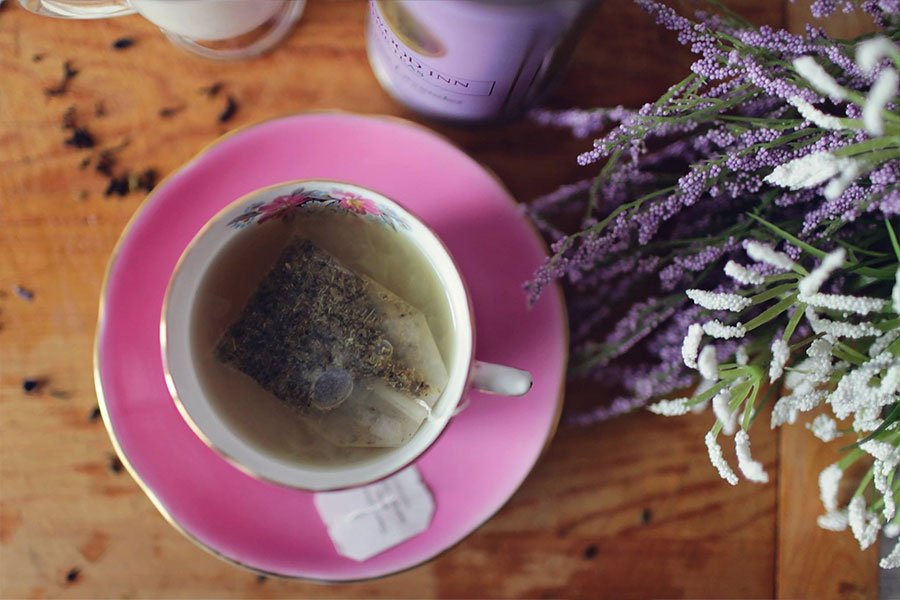If you’re a tea lover, you’ve likely heard of flowering tea, also known as blooming tea. Flowering tea is a type of tea that combines high-quality tea leaves with various flowers to create a unique and beautiful tea experience. In this article, we’ll take a closer look at the process of making flowering tea, from the selection of tea leaves and flowers to the brewing of the final product.

Selection of Tea Leaves and Flowers
The first step in the process of making flowering tea is the selection of tea leaves and flowers. It’s important to use high-quality ingredients to ensure the best possible taste and aroma. Some of the popular types of tea leaves and flowers used in flowering tea include:
- Green tea: This type of tea is known for its light and refreshing taste, and is often used as a base for flowering tea.
- White tea: White tea has a delicate and subtle flavor, making it a great choice for pairing with delicate flowers.
- Black tea: Black tea has a stronger and more robust flavor, and can provide a bold base for flowering tea.
- Jasmine: Jasmine flowers are often used in flowering tea for their sweet and fragrant aroma.
- Chrysanthemum: Chrysanthemum flowers have a slightly bitter taste that can provide a nice contrast to the sweetness of other flowers.
- Rose: Rose petals are often used in flowering tea for their delicate flavor and beautiful appearance.
When selecting tea leaves and flowers for flowering tea, it’s important to consider factors such as taste, aroma, and appearance.
Processing of Tea Leaves and Flowers
Once the tea leaves and flowers have been selected, they go through a multi-step process to prepare them for bundling and brewing. The processing of tea leaves and flowers typically includes:
- Withering: This process involves laying the tea leaves out to dry, which helps to remove excess moisture and soften the leaves.
- Steaming: Steaming the tea leaves helps to stop the oxidation process and preserve their natural color and flavor.
- Shaping: The tea leaves are then shaped into small bundles or balls, which will later unfurl when brewed.
- Drying: Finally, the tea leaves are dried to give them their final shape.
The flowers used in flowering tea are also carefully processed to ensure they unfurl properly when brewed. This process typically involves drying the flowers, removing the stems, and flattening them to ensure they bloom beautifully in the hot water.
Handcrafting of Flowering Tea Bundles
The preparation of tea leaves and flowers for bundling is a delicate process that requires skilled artisans. The tea leaves and flowers are carefully arranged and bundled together by hand to ensure a beautiful, aromatic display when brewed.

The handcrafting process is an art form in itself and takes years of practice to perfect. Skilled artisans take pride in their work, and the result is a beautiful, unique tea experience that can’t be found anywhere else.
The brewing of Flowering Tea
After the tea leaves and flowers have been carefully selected and processed, and the bundles handcrafted, it’s time to brew the flowering tea. Here are the steps for brewing flowering tea:
- Heat water: Heat water to the appropriate temperature for the type of tea leaves being used. For example, green tea should be brewed at a lower temperature than black tea.
- Place bundle in teapot: Place the flowering tea bundle in a clear glass teapot or teacup.
- Pour water over bundle: Pour the hot water over the bundle, being sure to cover it completely.
- Watch the tea bloom: As the bundle steeps, it will slowly begin to unfurl and bloom, revealing the flowers inside.
- Steep for appropriate time: Allow the tea to steep for the appropriate amount of time, typically 3-5 minutes.
- Serve and enjoy: Pour the brewed tea into cups and enjoy the beautiful display and delicious flavor.
Brewing the tea for too long or at too high of a temperature can result in a bitter taste, while brewing it for too short of a time can result in a weaker flavor.
Health Benefits of Flowering Tea
In addition to its unique taste and beauty, flowering tea also offers a number of health benefits. Here are some of the ways that flowering tea can improve your health:
- Antioxidant properties: Tea leaves and flowers are rich in antioxidants, which can help to boost the immune system and fight off free radicals that can cause damage to cells.
- Anti-inflammatory properties: Some of the flowers used in flowering tea, such as chamomile and lavender, have anti-inflammatory properties that can help to reduce inflammation in the body.
- Relaxation: Flowers like chamomile and lavender are also known for their relaxing properties, which can help to reduce stress and anxiety.
- Digestion: Tea leaves can help to improve digestion and promote weight loss by boosting metabolism and reducing the absorption of fat.
- Heart health: Drinking tea can help to improve heart health by reducing cholesterol levels and improving blood circulation.
- Bone health: Tea leaves contain flavonoids, which can help to improve bone density and reduce the risk of osteoporosis.
- Energy: The caffeine in tea can provide a natural energy boost, making it a great alternative to coffee.
- Cognitive function: Drinking tea may also help to improve cognitive function and reduce the risk of cognitive decline.
Flowering tea is a beautiful and delicious tea experience that offers a range of health benefits. By carefully selecting high-quality ingredients, processing them with care, and handcrafting the tea bundles, skilled artisans create a unique and unforgettable tea experience. When brewed properly, flowering tea offers a beautiful display and a delicious, aromatic flavor that is sure to impress. So why not give flowering tea a try and experience all of its beauty and health benefits for yourself?
Read more from the website:











Leave a comment